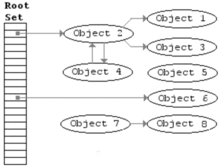In Golang I saw that this language is compiled (and that's right, the website itself tells which architectures compilers generate code for), and, to my surprise, it's Garbage Collected!
Garbage Collection is virtually universal in the world of interpreted and interpreted languages.
And the implementation of these garbage collection algorithms is obvious: The interpreter / VM implements algorithms for allocating allocated memory; this is possible because the program execution is within the execution of another independent program that takes care of memory.
But in a compiled language, the program is "loose": It runs independently.
So without a runtime wrapper, how does Golang implement Garbage Collection?
Edit 1
Well, roughly speaking, what I understood from the answers was:
Go does not have a runtime for garbage collection, but has a "companion" runtime: GC is implemented as a standard library of language implementation. Every program written and compiled in Go runs independently, but next to it is another runtime for memory.






